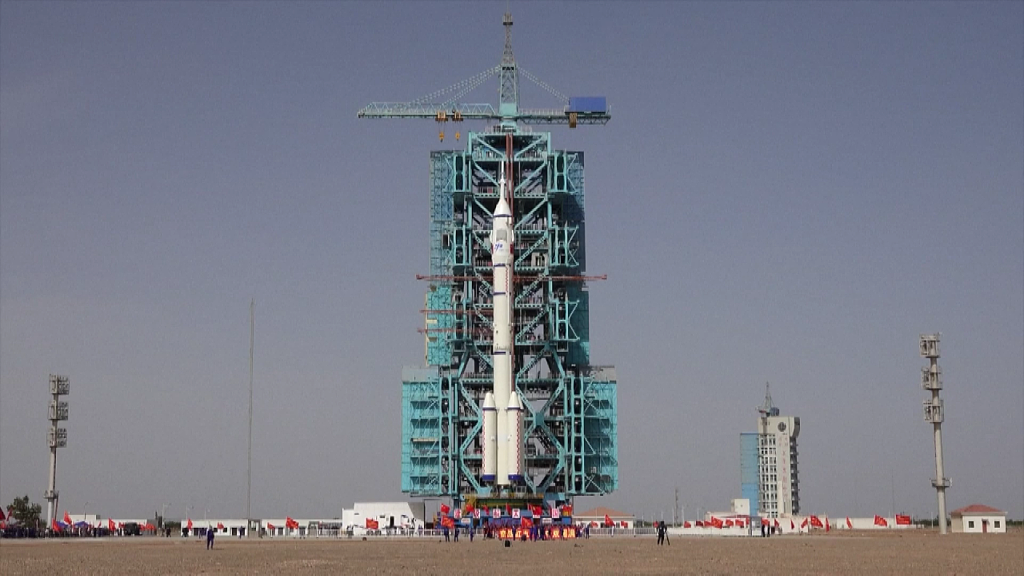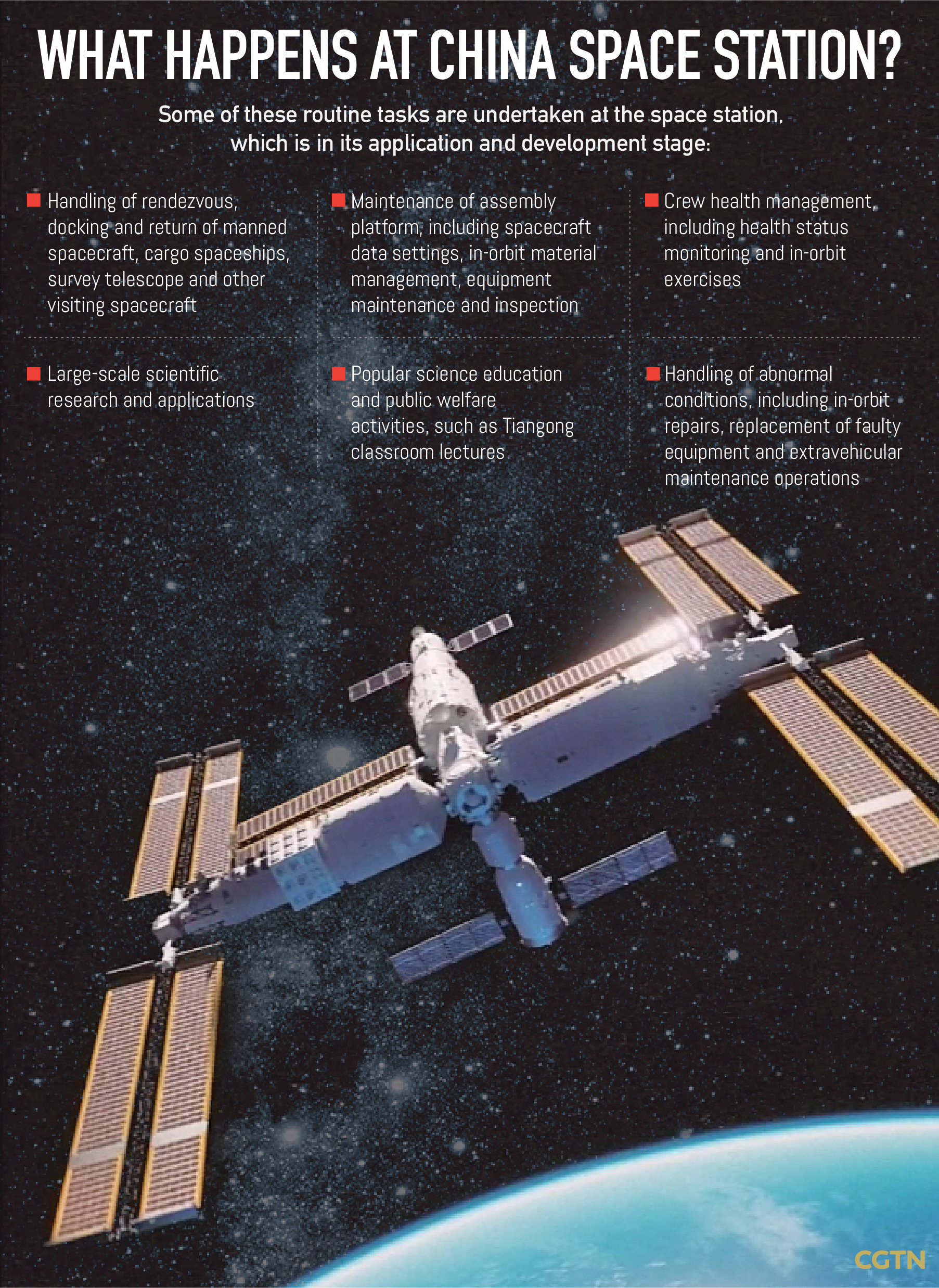01:10

The Shenzhou-16 crewed spaceship will be launched at 9:31 a.m. on Tuesday Beijing Time from the Jiuquan Satellite Launch Center in northwest China, the China Manned Space Agency (CMSA) announced at a press conference on Monday.
Three Chinese astronauts, or taikonauts, Jing Haipeng, Zhu Yangzhu and Gui Haichao, will constitute the Shenzhou-16 crew, with Jing serving as the mission commander, Zhu the space flight engineer and Gui the payload expert.
The Shenzhou-16 manned mission, the first manned mission since China's space station entered the application and development stage, will conduct fast automated rendezvous once in orbit and dock at the radial port of the Tianhe core module, forming a combination of three modules and three spaceships.
The Shenzhou-15 crew will return to north China's Dongfeng landing site after completing an in-orbit rotation mission with the Shenzhou-16 crew.
Click here for CGTN's livestream of the press conference.

The Shenzhou-16 crew will stay in the space station for about five months, said Lin Xiqiang, deputy director of the CMSA.
During their stay, the crew's main tasks will include an in-orbit crew handover from the Shenzhou-15 crew, carrying out scientific experiments, testing payload application, performing extravehicular activities (EVAs) and cargo-out tasks from the airlock module, installing extravehicular payload, and space station maintenance and repair tasks, said Lin.
Specifically, the crew will install electric propulsion cylinders and lift extravehicular cameras. The installation of large extravehicular application facilities, such as radiation biological exposure experiment devices and general test equipment, will also be completed.
They will also carry out large-scale in-orbit tests in various fields as planned. The tests are expected to produce high-level scientific achievements in the research of novel quantum phenomena, high-precision, space-time-frequency systems, the verification of general relativity and the study of the origin of life.
The "Tiangong classroom" teaching activities will also continue.
Two docking and departure exercises will take place during their mission, namely the return of the Shenzhou-15 spacecraft, the re-docking and evacuation of the Tianzhou-5 cargo ship, and the docking of the Shenzhou-17 manned spacecraft.
The Shenzhou-16 crew is expected to land at the Dongfeng landing site in November after meeting with the Shenzhou-17 crew.

181 days in space
Since their launch on November 29, 2022, the Shenzhou-15 crew has been stayed in orbit for over 180 days, with all work progressing smoothly.
The trio have successfully completed four EVAs, the highest number of EVA missions ever, along with multiple payload exit tasks.
Valuable experimental data has been obtained through the crew's in-orbit research, which includes eight human factors engineering technology studies, 28 aerospace medical experiments and 38 space science experiments, covering the fields of life ecology, materials science and fluid mechanics.
The crew are now making preparations for the arrival of the Shenzhou-16 taikonauts and their own departure with the Shenzhou-15 spacecraft.
A 'cross-shaped' space station in future
China plans to explore the space further with a crewed lunar landing before 2030.
The country is also developing its new-generation reusable near-Earth manned launch vehicle and new-generation near-Earth manned spacecraft.
To further support in-orbit scientific experiments and provide better conditions for the taikonauts, an extended module will be launched in due course, upgrading the space station's basic configuration from a "T" shape to a "cross" shape.